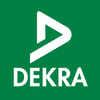When we think of workplace injuries, we often think of accidents—unexpected events where someone gets hurt. The danger of workplace hearing loss is that it can be so gradual that we don’t even know it’s happening. While it’s natural to be startled at an abrupt, loud noise, we can learn to ignore more consistent exposure, like a loud work area. Certain solvents and chemicals can also cause or lead to hearing loss. Impaired hearing can lead to reduced awareness, concentration, and fatigue, all of which can lead to greater risk of injury.
Hearing loss affects industries as diverse as manufacturing, construction, mining, entertainment, and the military, and accounts for an estimated $242 million in workers’ compensation payments each year. According to the Centers for Disease Control:
- About 25% of all workers have been exposed to hazardous noise, with 14%—22 million people—exposed in the last year.
- 34% of noise-exposed workers report not wearing hearing protection.
- The prevalence of hearing loss among noise-exposed tested workers for all industries has decreased less than 1% over 30 years.
As we near the end of National Protect Your Hearing Month, we can remind ourselves that preventing hearing loss, like any other type of injury, requires a comprehensive process and a commitment at all levels of the organization.
At the senior leadership level, executives need to make safety a priority, and have governance in place to implement their vision for safety. Organizations can integrate awareness of high-decibel risk into job safety briefings and safety contacts procedures, which managers and supervisors use every day when working with employees on the front-line. These workers can support each other by observing and encouraging behaviors that keep each other safe.
The tools, processes and policies for everyday work need to support hearing safety. For example, do people have easy access to hearing protection? Is it well maintained and inspected? Is exposure to hearing loss monitored as part of a comprehensive exposure reduction process?
Critical parts of the workplace—work environments, operating procedures, and so on—need to align with how humans actually think. For example, since we may not notice when our hearing is at risk, proactively planning for such exposures or changes in exposure is key. Employees need to understand how their brains can help and hinder them with regard to their health and safety. Noticing weak signals and environmental cues will help them to take protective measures to keep safe.
Cumulative injuries and illness tend to sneak up on us, unless there are systems in place to guide us to safety. With proper training, equipment, and a focus on safety at all levels, hearing loss is preventable.
DEKRA Solutions can help your organization focus on safety at all levels. Learn more here.


